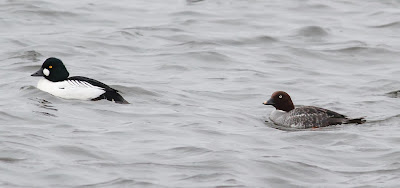Back home from two weeks in Lanzarote with a seemingly endless list of things to do so I put together a blog post until we’re truly up and running.
One of long list of my holiday emails waiting for catch up concerned the recovery of a Curlew ringed a few years ago.
Turn the calendar back two and a half years to 9th June 2010. Will and I are in the hills above the market town of Garstang on the western edge of the Bowland hills where we are on the lookout for wader chicks.
We found a couple of broods of Curlew chicks that day, eventually tracking down the youngsters despite the frantic and determined efforts of the adult birds to see us off their home patch.
Curlew
FC79566 was one of a brood of three healthy chicks ringed that day.
Curlew chicks
Flip the calendar forward to 13 January 2014 and Liverpool John Lennon Airport alongside the estuary of the River Mersey, 7 kms southeast of Liverpool city centreand some 62 kms from Garstang. An airport worker is conducting routine checks of the runways to ensure the safety of planes landing and taking off when he comes across the freshly dead corpse of FC79566.
The Mersey Estuary and Liverpool John Lennon Airport - http://www.airliners.net/photo//0832289/L/
I contacted the Operations Planner at the airport Andrew Hepworth who told me that the bird was probably hit by an aircraft but as no pilot reported a possible strike the cause of death could not be confirmed.
Andrew went on to say that due to their proximity to the Mersey estuary this time of year does result in large numbers of Curlews close by. Groups of Curlews regularly fly over the aerodrome fence boundary and settle on the airfield. As a result the resident bird control operators are constantly shifting them back over the fence and back to the shores of the estuary below.
Curlew
“As you appreciate we do get our fair share of dead birds/strikes and these tend to be curlew, woodpigeon, gull species, swifts during the summer, and the odd kestrel.”
In 2002 Liverpool Aiport was renamed in honour of John Lennon, a founding member of The Beatles, 22 years after Lennon's death. A 7 ft tall bronze statue stands overlooking the check-in hall, and a tribute to the Beatle’s well known song Yellow Submarine graces the entrance to the airport.
Yellow Submarine at Liverpool John Lennon Airport - Wikipedia
I’ll catch up with fellow bloggers soon and post pictures of Lanzarote.
Also, as soon as I can find precious time for a determined read, there is a review of a stunning new book Ten Thousand Birds - Ornithology Since Darwin.
Stay tuned.
Linking today to Anni's Birding Blog, Camera Critters Blogspot and to Eileen's Saturday Critters.
Linking today to Anni's Birding Blog, Camera Critters Blogspot and to Eileen's Saturday Critters.








































.jpg)



















.jpg)












